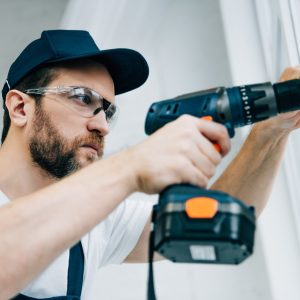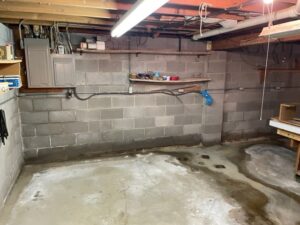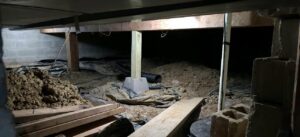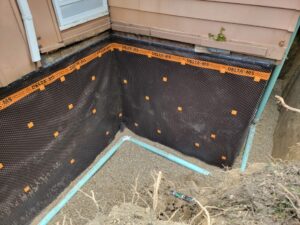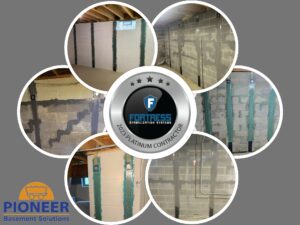Basement Waterproofing Methods
If you have been shopping around for a basement waterproofing contractor, by now you may have several proposals that all suggest a different way to “fix” your leaky basement. Why are there so many conflicting opinions? Some contractors ONLY offer outside systems and still others only offer inside basement waterproofing methods. On the other hand, you may come across a contractor or two that only installs their own “patented” product. They might present a convincing argument as to why their system is superior. “Patented” simply just means that they can charge a higher price because their claim is that they are the only contractor that can install such a system. The truth of the matter is that no company wants you to think that what they do is simple or common.
Therefore, lets discuss some basic, common sense basement waterproofing methods that have been proven to be successful for many years.
Exterior Basement Waterproofing
An exterior basement waterproofing system is done in several steps. First of all, we excavate the foundation down to the footer. Then, the basement walls are inspected for any weak spots or cracks and repaired accordingly. A sealer is applied to the outside of the basement walls and then a dimpled membrane is wrapped around the foundation. A new footer drain is then installed and covered with gravel. Once the soil is put back into place, the surface is graded to slope away from the house.
Exterior basement waterproofing is the best defense against surface water.

Interior Basement Waterproofing
A true interior footer drain is installed in a trench around the footer. The drain slopes down hill which moves the water towards the drainage point. For this purpose, a sump pump system is usually installed. There should be about 1/2″ fall for every 10 feet of drain pipe to promote a good flowing drain. Once installed, the new footer drain is covered with gravel. Lastly, new cement is poured over top of the gravel to finish off the system.
Interior basement waterproofing is the best defense against ground water.

Combination Systems
As the name suggests, a combination system would be an interior AND exterior system, both installed to work together. This may be necessary depending on the type of water seepage problem your basement has. We can utilize this method in certain parts of the basement, or in the entire basement. It may be necessary to waterproof an interior portion of the basement if the area is not accessible from the outside. Additionally, some homes may have an issue with both ground water and surface water. In this case, a combination system may be the best bet.
Which Method is Best for Your Home?
These basement waterproofing methods have been proven to permanently correct water intrusion. So which of these methods is best for you? It all depends on where, and how, water is coming in. Is there a “one size fits all” solution that works for every basement? No. Every home is different. There are different types of soil. There are various ways in which water can enter a basement. And there are factors such as age, quality, and structural integrity of basements and foundations. For these reasons, it is important to assess the problem before determining a solution.
Pioneer Basement Solutions has been employing the above mentioned methods for many years. We have a proven track record and our common sense solutions work. Please explore the rest of our website to learn more about us. Follow us on Facebook to stay up to date on our latest blogs.
Please feel free to contact us for a free inspection (homeowners) to discuss basement waterproofing methods.

